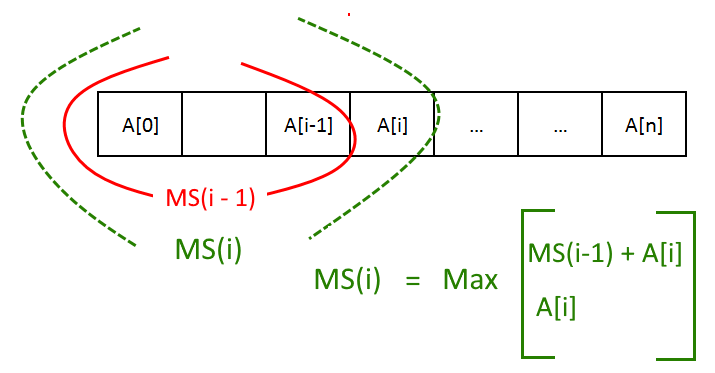|
This post is completed by 2 users
|
Add to List |
199. Dynamic Programming - Maximum Subarray Problem
Objective: The maximum subarray problem is the task of finding the contiguous subarray within a one-dimensional array of numbers that has the largest sum.
Example:
int [] A = {−2, 1, −3, 4, −1, 2, 1, −5, 4};
Output: contiguous subarray with the largest sum is 4, −1, 2, 1, with sum 6.
Approach:
Earlier we have seen how to solve this problem using Kadane's Algorithm. In this post, we will how to solve it using Dynamic programming.
We will solve this problem in a bottom-up manner.
let's say
"MS(i) is the maximum sum ending at index i"

To calculate the solution for any element at index "i" has two options
- EITHER added to the solution found till "i-1"th index
- OR start a new sum from the index "i".
Recursive Solution:
MS(i) = Max[MS(i-1) + A[i] , A[i]]

Output:
[0, 1, 3, 0, 0, 2, 9, 7, 10] Maximum subarray is 10

